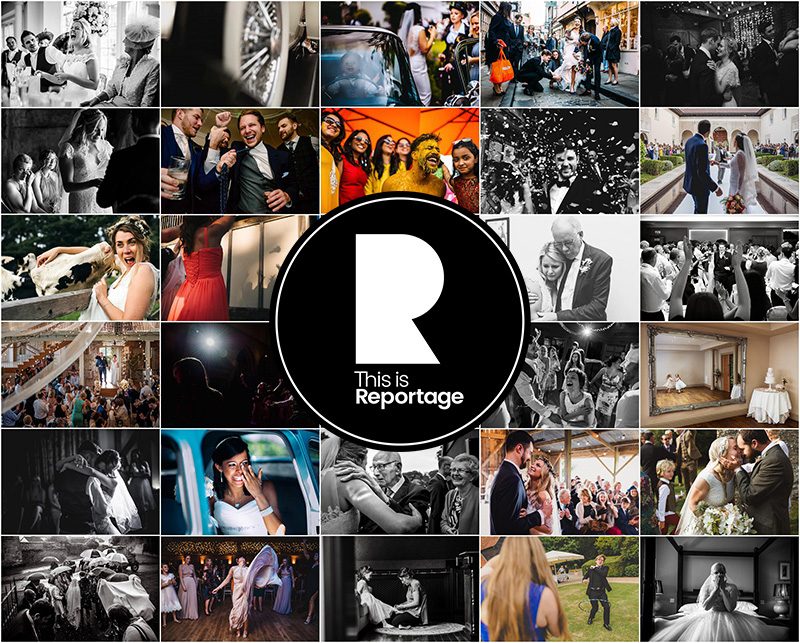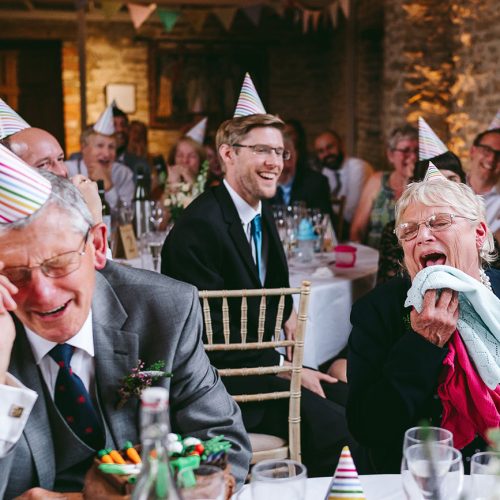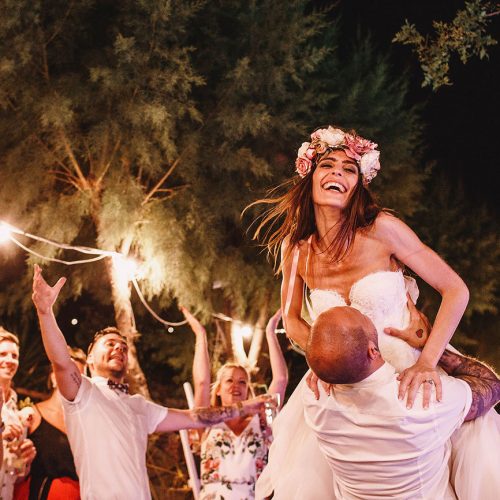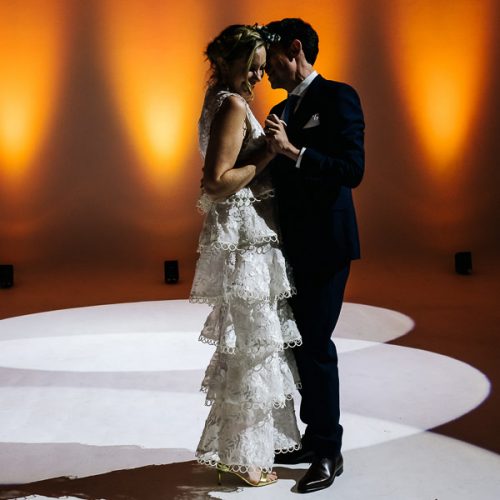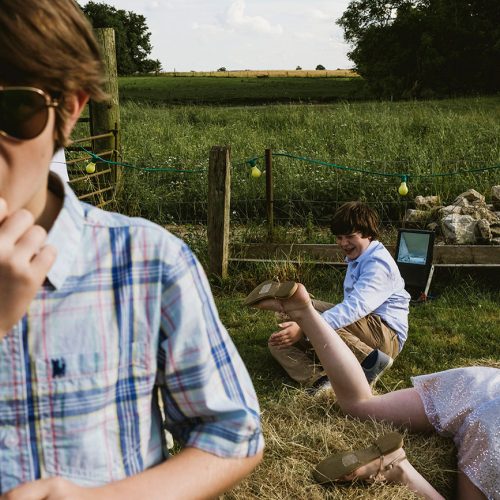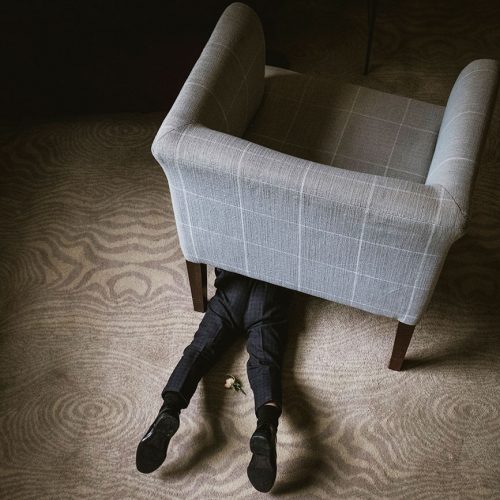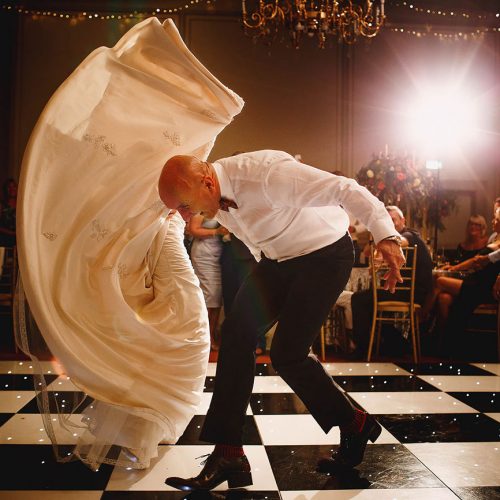Ask The Photographers: Are Two Photographers Better Than One?
Something that comes up so much during a search for a wedding photographer is the question about numbers; do you work with a second photographer? Are two really needed? Can you capture groom prep as well as bridal prep if you shoot solo? Can you still be discrete if there are more than one of you? We thought that we’d ask our members – all fantastic documentary wedding photographers themselves – about their thoughts on the subject.
Just like our first ‘Ask The Photographers’ piece we published last week (which was all about how to choose your wedding photographer), what follows is an exhaustive and incredibly interesting opinion-piece, straight from the mouths of wedding photographers themselves (from 30 of our members), this time answering the question “Are two photographers better than one?“
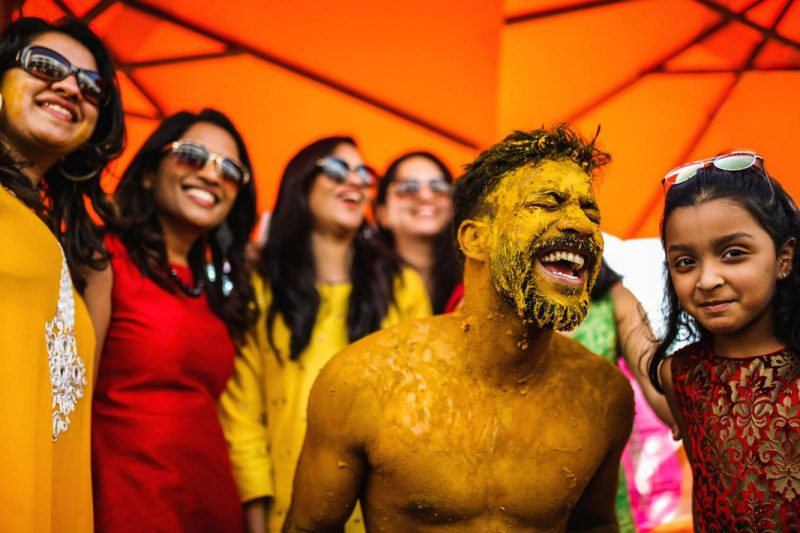
Image by Geeshan Bandara
Geeshan Bandara said:
“I hesitate to determine what is ‘needed’ as I think it should be up to the couple, but I can think of several advantages to having two shooters.
In my case, the weddings I shoot have the bride & groom getting ready simultaneously and sometimes the locations are as much as 20-30 minutes away from each other. My second shooter allows me to ensure I capture both to give to my client. We maintain a consistent style and I try to keep his shooting to a bare minimum as he functions more all round as an assistant than just a shooter.
We interact a lot with non-verbal communication. Having an understanding of each other we’re able to read each others’ minds and anticipate our respective needs. I’d say that if the photographer has a second shooter that has been with him for a while, it’s an advantage over a solo shooter.
Having shot many weddings on my own I can say that I’m able to provide a much better quality of product with the second person.”

Image by Hannah Dornford-May
Hannah Dornford-May said:
“I shoot the majority of weddings alone. Maybe for about 1 or 2 a year I’ll have a second photographer with me but it’s not the norm at all. For me, shooting a wedding has always been about the story. The way I work, and the style I shoot in, is to get in amongst the action and be a part of things. Adding another photographer to that mix can, I’ve found, change the dynamic and make people far more aware that there are people with cameras around. Of course this is personal preference and totally down to my shooting style. I know that logistically I can work with the couple to cover as much as possible without needing another pair of eyes there and compromising my coverage of the day. Consistency is key right! And that’s what is always in the front of my mind.”
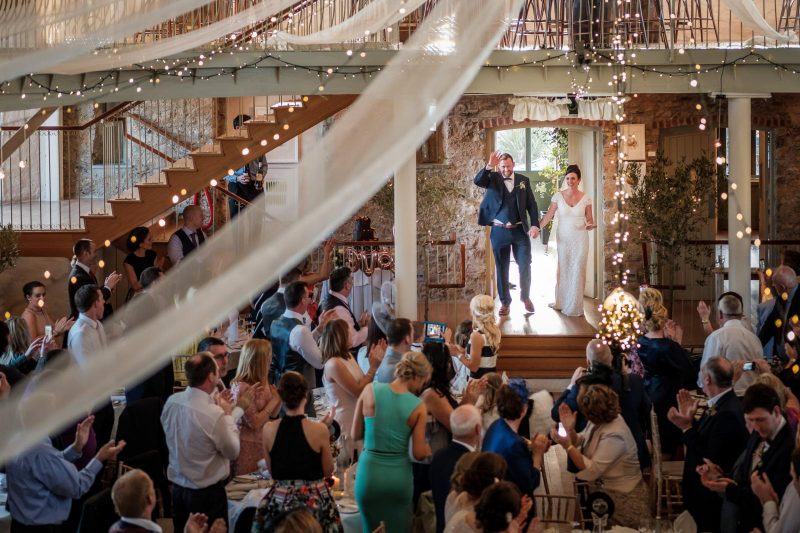
Image by Ronan Palliser
Ronan Palliser told us this:
“Naturally the argument made for and against a second shooter depends on who you ask and what they normally do, so in the interests of full disclosure I should say up front I rarely work with a second shooter, by choice.
Personally I feel there’s a case to be made for two photographers when logistics would otherwise require your photographer to physically be in two places at once – for instance if the groom is getting ready more than 15 minutes away from the bride. For couples in that situation who want coverage of both in the morning, then I’ll often suggest a second photographer covers that, and perhaps travels with the groom to the ceremony. But once I also arrive at the ceremony I find it best for the second photographer to leave at that stage.
The question for couples to ask themselves in my opinion is not about how many photos you want – it’s more about how prominent (or not) you want your photographer(s) to be on the day, and how much their presence might influence your behaviour or your guests behaviour. There are photographers who work as pairs who are simply brilliant at both doing so discretely (York Place Studios comes to mind), but that is a skill that not all photographers (even sole ones) have. So if you’re doubling the number of photographers around you on the day, and particularly if you’re the type who isn’t super comfortable having their photo taken, which may have nudged you towards documentary photography in the first place, this is something to consider. Lots of couples have videographers also, and the videographer may already be a team of two, or at least shoot with multiple cameras during the ceremony and speeches for instance. So thinking about how you’ll experience the day with those cameras around is important. I tend to advise couples that just in terms of the number of cameras that will be doing the rounds on their day, less is more.
The most common argument for a second shooter is to ensure nothing is missed. But good professional photographers are skilled at getting you “complete” coverage of your day at a minimum, really. And with good planning, and good communication between the photographer and the couple, it’s usually possible to structure the day such that the photographer has the chance to capture as much of it as possible – especially the parts that are important to you – without the need for a second set of eyes.
One final thought from personal experience. On the rare occasions when I’ve had a second shooter with me all day, I’ve noticed, even inadvertently, a tendency to linger a bit more on the formal family and bridal party photos, knowing someone else is getting “moments” and that in turn means the couple spends more time actively aware of being in front of my camera, whereas my preference (and usually their preference) is for us to keep that part of the day, if it’s required at all, to a minimum. Knowing I need to photograph everything else too besides those “boring but important and necessary” formal photos, makes it in my interest and theirs that we get through those efficiently, and they get to spend maximum time interacting with guests, while I get to spend maximum time photographing those interactions.”
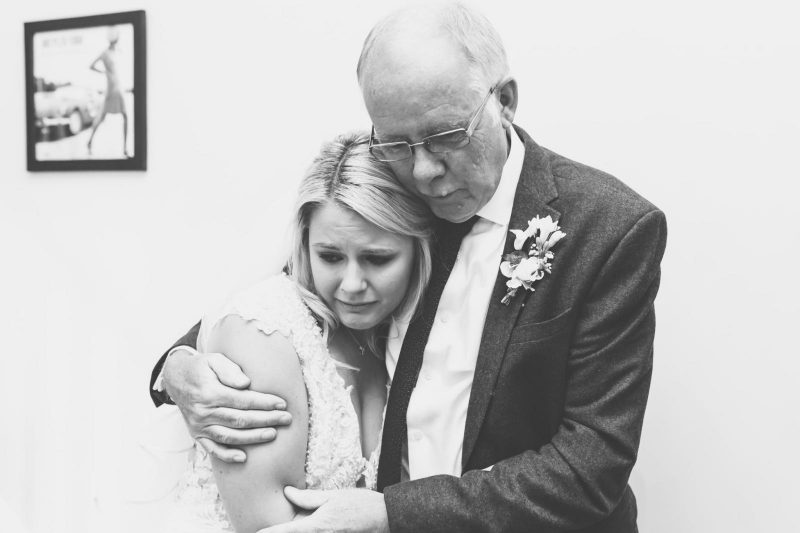
Image by Willo Photography
When we asked Karen Williams of Willo Photography if two photographers are better than one, she said:
“Being a husband & wife duo, we’re firmly in the ‘yes’ camp.
We know the issues that can come with working with a second photographer, so we’ve got the double act thing nailed down. We work intuitively to make sure we’re rarely in the same place at once, and we have the advantage of being able to communicate with a silent glare or a wink if one of us does go rogue.
Although it’s cool to work a wedding with your other half (having someone pop up with a bottle of Lucozade on a hot day is priceless), we still work our butts off and give our best. For us, it’s more about the yin & yang of us as a team. While our styles are similar, I’m an undeniable romantic while Lee is all about reading the room. We see everything differently, in a way that works together beautifully.
It’s a huge benefit that we have very similar styles; so much so that during editing there’s often a heated debate over who took a killer shot, before we double check and one of us will happily revel in the glory of getting one over on the other.
On the whole, it’s just really good to know someone has your back. Just this weekend, I got halfway through the day before crumbling with what turned out to be a nasty case of tonsillitis – there’s only one thing that got me through the day, and that was Lee!”
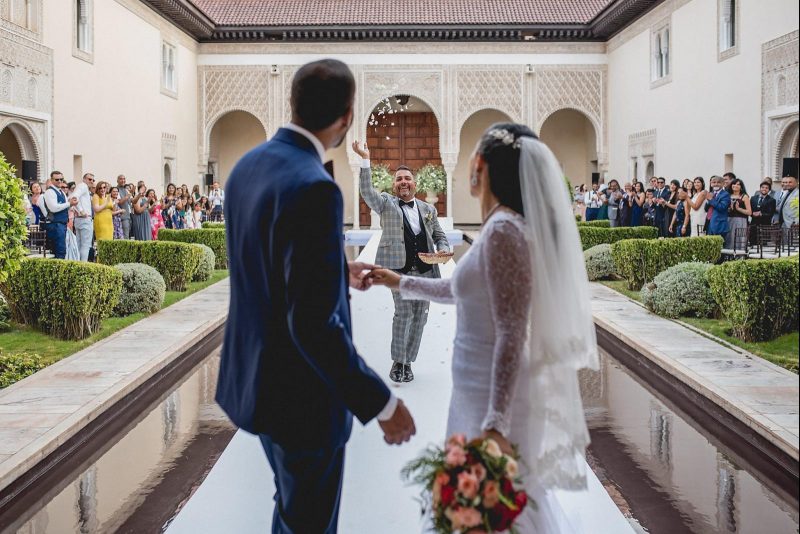
Image by Maria Assia
Maria Assia had this to add on the subject:
“A question that brides and grooms often wonder about is whether to have one or two photographers at their wedding and unfortunately there isn’t a right or wrong answer. It really depends on the couple and their vision for their wedding.
I work mostly by myself, but a lot of the time this has to do with the kind of couples that book me and what their priorities are for their wedding day. Similarly to me at my wedding, most of my couples want awesome photos of their day and their loved ones without the constant shutter click in their faces. They want have an awesome day and party and not worry about their photos or their photographer. They don’t want paparazzi style coverage, they just want to have fun while knowing that their photos will be a great reflection of the fun they had.
When I photograph a wedding I am less obvious, I can integrate easier and seemingly become one of their mates who they’re celebrating with. I am not part of a wall of lenses and flashes pointed their way and the photos usually end up being more natural. If they’re not too far apart in the morning, I can still cover both sides and showcase the rest of their day in a coherent set from one point of view.
Especially at destination weddings, having one photographer is also often more practical on an expense level and oftentimes ceremony officials, be it priests or celebrants, will be more relaxed if there is just one photographer around. Especially if there is also a videographer present.
On the other hand, a lot of my clients also choose to have a second photographer. It means that each photographer can cover the day in an almost separate timeline, following the bride and groom and their perspective and experience. When done well, it can complete the story for the bride and groom almost like a film and they love it. It also means, that you can cover more ground at the same time. You can capture more moments, more angles and more viewpoints. Especially for large Asian, Greek, Thai or Jewish weddings, it offers a wider spread of opportunities to capture what was really going on with more wedding guests and from two separate positions or vantage points.
Weddings are exciting events that are as individual as the couples who plan them and I don’t think there is or should be a one fits all solution.”
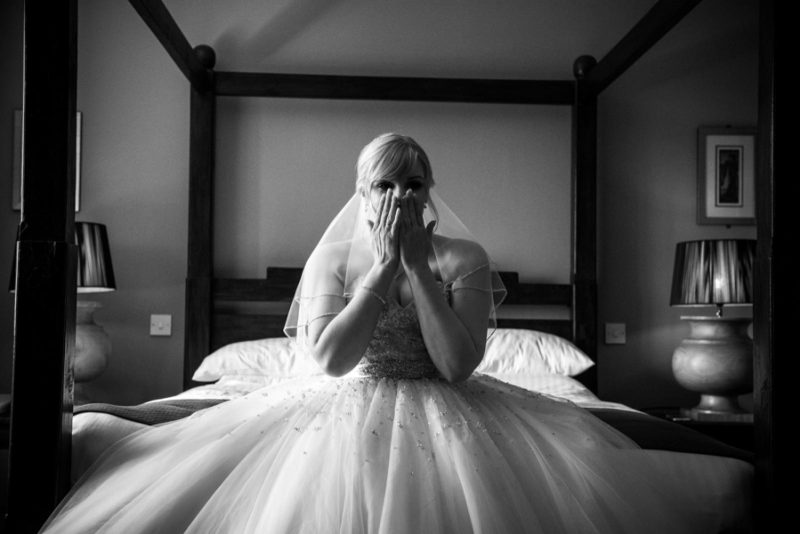
Image by Nick Brightman
Nick Brightman said:
“In the immortal words of Vicky Pollard….’No, but yeah, but no’ (Check out my cultural references!!) For me, I’m trying to be unobtrusive, unnoticed, a wedding ninja ©(!!) so I find that working on my own makes this easier. There are the odd occasions where the couple have asked me to arrange a second shooter and it is great to have some company, but for me, I think that in the vast majority of situations, shooting on your own is just fine and dandy.”

Image by Helen Howard
We asked the same question to Helen Howard and she said:
“When I first started shooting weddings in 2007 I often procrastinated about, and thought it would be really cool to be one of those husband and wife photography teams.
I always felt envious of awesome photography duo’s. Only two obstacles; We’re not that cool and my husband doesn’t know (nor does he want to know) his way around a camera.
In ten years I’ve shot weddings mostly on my own. A second shooter was always another person to have to think about: Would they turn up? Would they be any good? Would they get in my shot? Would their style fit with mine? Who would own the images? Would their images be better than mine? All the insecurities!!
So in 2012 I got a message from a girl who was just starting out and had booked her first wedding and she was essentially in a bit of a panic as to whether she had taken on too much. It was her sister’s friend, but she was worried as it was a very, very dark venue. She asked me If I would shoot the wedding, if the couple were happy for me to, and could she assist me/second shoot. I don’t know at the time if this was an easy decision, but I said if that’s what they wanted to do then I didn’t have a problem helping her or them out. It was a massive success. Our way of shooting seemed to compliment each other and we managed to work around each other quite smoothly, our style and personalities were a good fit. I was at this stage very early days in pregnancy with my son, only a few weeks. So over the coming summer, this other photographer came and second shot for me in return for building up her portfolio and experience and in the years since we have helped each other out when couples have requested a second shooter.
I can usually tell from enquiry stage if the wedding will be tricky to shoot alone, but I always manage expectations and say that if the wedding os at a different location then the logistics involved might mean having a second shooter may be beneficial to cover arrivals at the Church, whilst I am at bridal prep etc. But generally, I say every clearly what time I would expect to leave the house to get to the church or venue and explain that the bride either needs to allow extra time to be ready for before I leave, or sometimes they may say they are happy to not have photos leaving the house, as long as I cover arrival at the church or venue.
If a couple wanted absolutely everything covered then definitely a second shooter would add a lot, because one person cannot be in two places at once. I like the different perspective you can get as a second shooter, but again, when you are delivering probably 500-1000 images as a solo photographer, I am not sure if it’s necessary to have even more. I guess it depends on the perceived value of this to the couple. Is it possible to deliver too many images to your clients? My clients say no, but I have never had anyone come back and say they wished they had a second shooter because I missed something through shooting on my own.
If two photographers are used to working together then I see more of a benefit than just hiring a second to cover candids that you might otherwise neglect if the logistics are tricky. You need someone who has a complimentary way of shooting/style to your own and someone who is happy to step in and take the lead if necessary and someone you trust to turn up on time and conduct themselves in a way that represents your business.
(I’d like to just add that girl that asked to work with me (Lucy Noble Photography) is now one of my closest friends and when we shoot a wedding together it’s often hard to tell who took what once the images are all together. So it seems like it works when you have a great relationship with your second, not sure how it would work if it was someone you didn’t really know!)”
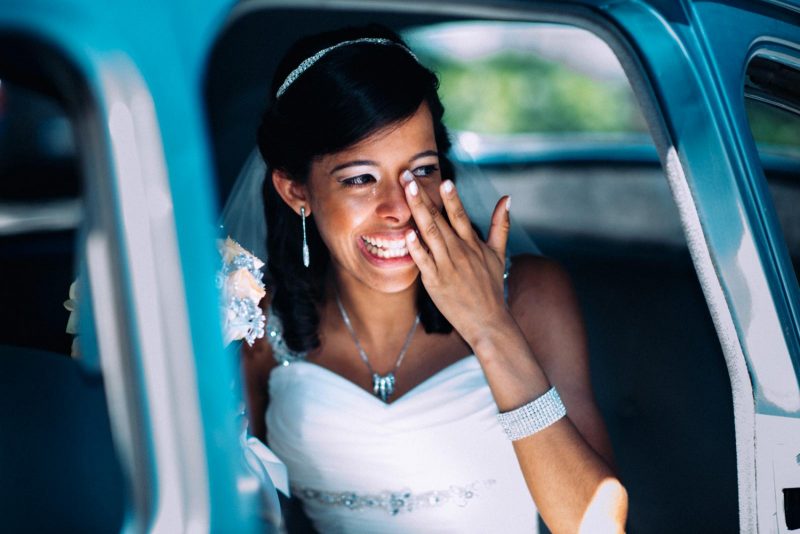
Image by Carlos Porfirio
Portugal-based TiR member Carlos Porfirio said:
“Usually I always advise the couple to have only 1 photographer; the advantages of it are many: The only shooter doesn’t have to worry about the other one, by its position, etc,; the couple will only receive only 1 style of shooting / cameras styles, (though there are professionals with similar approach), but the major advantages are that with one photographer grooms will have one style (hopefully if its the one they hired), less technicians in the field, so a more discrete work.
I only recommend 2 photographers when the ceremony starts early in the morning and one photographer isn’t able to deal with couple preparations, or when the couple is very distant from each other, while getting prepared.
Of course there are advantages of having 2 shooters too, like have different perspectives (of different focal distance lenses), or when a shooter is taking social pictures of guests, while the other is getting a shot of the couple, or in the entrance of the bride in the church (the only moment I always feel that having a shooter behind would also be nice!)
The major problem of having 2 shooters is that we are talking about different minds that see the moment quite in a different way, so it will happen for sure that in somewhere (not over in the rainbow :P) they will “crash” and lose unfortunately “one moment””
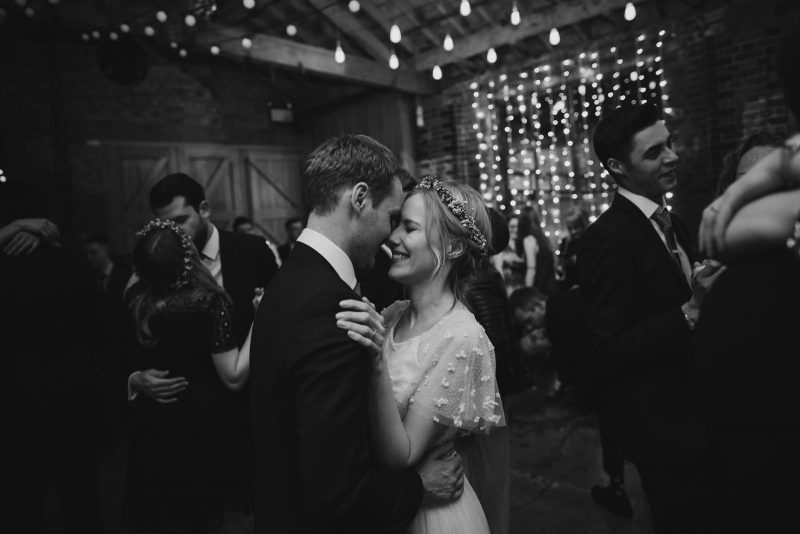
Image by Luke Hayden
Luke Hayden told us:
“I shoot 95% of my weddings alone but there are times when having a 2nd photographer can be very beneficial. For instance, you can’t be in two places at one time. If I have a couple who want me to capture both sides of the wedding party getting ready in the morning and their locations are not close to each other then I would definitely recommend booking a 2nd photographer. Guys do generally get ready quicker then girls but this should not mean that they get left out during this part of the day.
Another reason couples may want to book a 2nd photographer is if they are having many guests at their wedding. If you are having 200+ guests at your wedding then I would always recommend booking a 2nd. Having someone by my side capturing photos is a good thing and this also gives me some more creative freedom to create frames.”
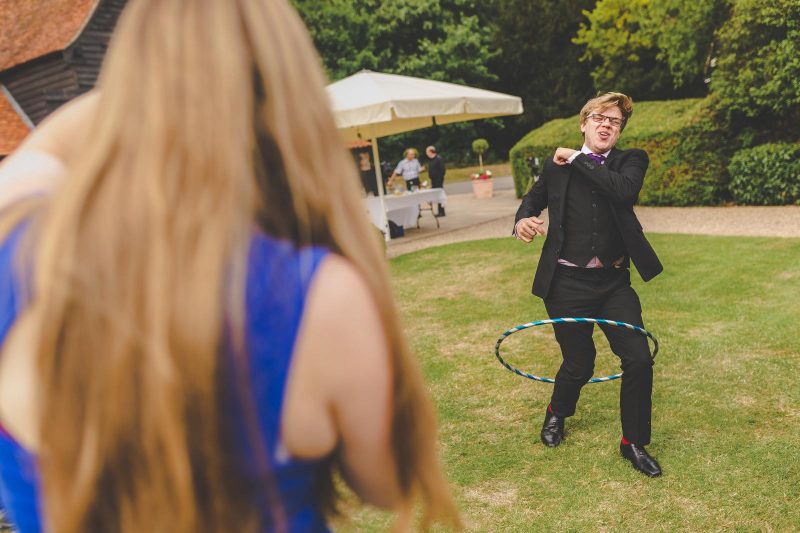
Image by Louise Gilbert-Young
Louise Gilbert-Young of Sam & Louise, told us:
“One good photographer is better than two mediocre ones, always.
But I think there’s a big difference between shooting consistently as a team and having a second shooter occasionally.
Myself and Sam Gilbert have been shooting weddings together as a team for the last 7-8 years and it’s seamless. 200+ weddings together, we both know exactly who’s doing what and when. I know the kind of shots he’s getting and vice versa. We know we aren’t shooting the same things or getting in each others shots. We don’t have to ask or be told what shots to get. It’s not a lead shooter/second shooter dynamic. We’re essentially both lead shooters doing our own thing and helping one another out where necessary. I know that he can go off and get AB and C and I’ll go off and get XYZ.
It’s like working alone, except someone has always got your back.
Knowing what we can deliver as a team, personally I’d never go back to working alone. That’s not to say that it’s better necessarily, but it’s definitely different.
I do think that sometimes there’s a misunderstanding about what having two photographers is about though. Especially when it comes to photography teams. A lot of people seem to assume it’s only about having more coverage. Or just being able to have coverage of both bride and groom in the morning. For us, it’s not that at all. Those things are a bonus and sometimes part of the reason a couples book us, but it’s only a small part of the story. Being a team is also things like being able to get a seemingly impossible amount done in super quick time. It’s stuff like not having to rely on or utilise guests to help round people up for group photos or to poofe dresses. It’s negotiating with a pompous toastmaster whilst the other carries on shooting couples portraits. And sometimes it’s just stuff like taking over and capturing the first dance when your partner is puking in the car park (definitely didn’t happen earlier this year :p )”
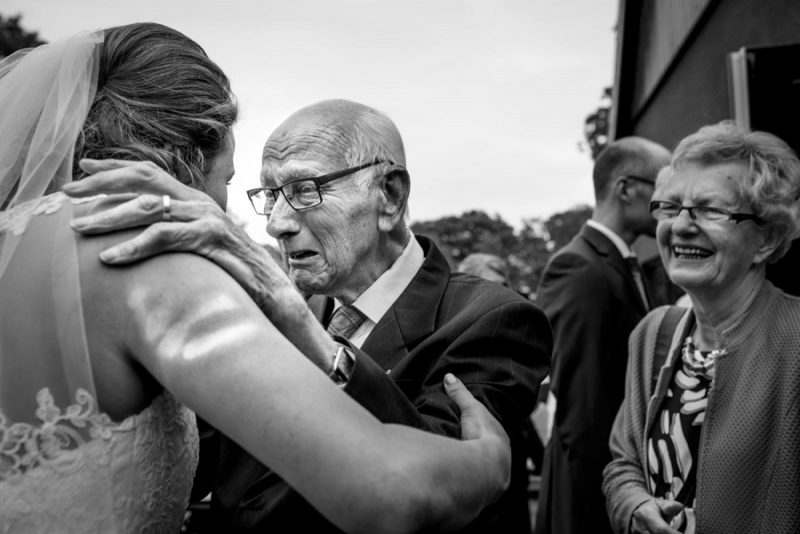
Image by Indra Simons
Netherlands-based Indra Simons said:
“I’ve been thinking about that myself lately. I’ve done both, but mainly work by myself. I think two photographers is mainly a good thing for the photographer. He or she has to work less hard 😉 You don’t have to be everywhere at the same time, but can assign different tasks to each photographer. Sometimes by working together, you’ll be able to catch ‘both sides’ of a story, which of course is nice.
But the question is, will it result in a better or more interesting reportage for the bride and groom? Most photographers are trained enough not to miss the important stuff, and bride and groom won’t miss anything that they weren’t aware of themselves. But they do have to pay more for two photographers.
Another disadvantage for the bride and groom is that they will probably be more aware of being ‘in the picture’ all the time. Especially when there are also one or more videographers present.”
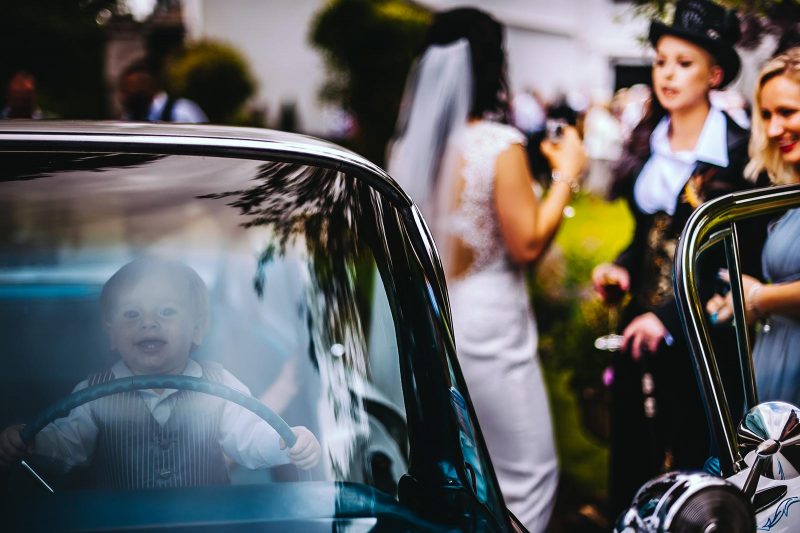
Image by Gareth Williams
Gareth Williams told us:
“One of the major benefits to using a second photographer is definitely the ceremony, one at the back, one at the front, two different perspectives really works. I always stick myself right at the front at every wedding, never at the back, so when I see the other view point it can only be a bonus I believe. Nobody is going to ever shoot in the same style as the prime photographer, never, not totally anyway, but you can’t beat getting the other person in the morning getting ready pictures, surely? I doubt the couple question style that much when they get the collection of images back with moments captured that would forever be forgotten and missed, however, in my experience I also always seem to be screaming in my mind and thinking “STOP WATCHING AND TAKE THE PHOTO!!!” :)”
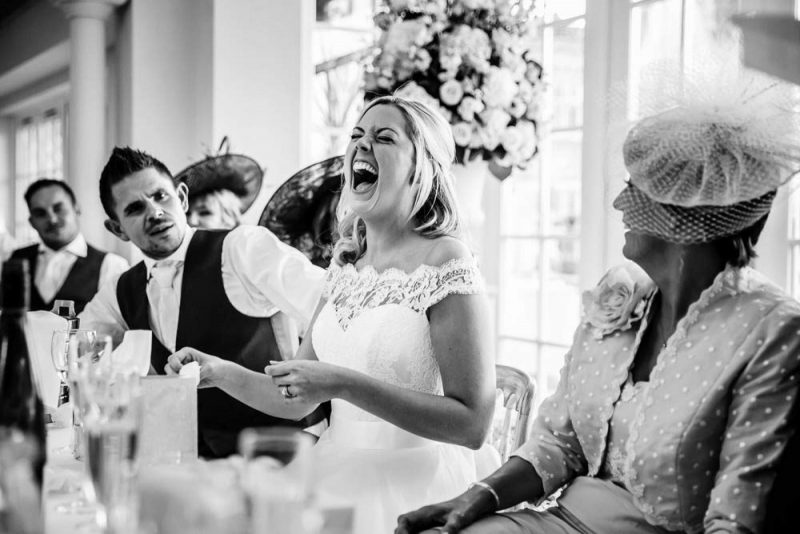
Image by Paul Tansley
We asked Paul Tansley of Stylish Wedding Photography the same question and he said:
“This is a question that is very close to my heart. Seven years ago when I started shooting weddings, I asked my partner Carol to come along with me. She wasn’t a photographer, however she is an Art Director and was in charge of Wedding & Home magazine for 7 years and had worked with fashion photographers for over 15 years at the time. She has an exceptionally good eye for an image. I gave her one of my spare cameras to use, so that she could take some pictures too.
Immediately once editing the images I knew it was a good decision. The simple fact is that however good a wedding photographer is (and I consider myself pretty good) one photographer will only ever see the wedding from one perspective – their own. They will never be able to see it from another photographer’s perspective. Firstly because every wedding photographer is unique in the way that they see things. But secondly one photographer simply cannot be in all places at once. There are some unique moments during a wedding day, where one photographer has to make a choice. Do you stay at the front of the wedding ceremony to watch the groom carefully and see if he sheds a tear or looks to the sky and makes his final prayers? Or do you leave the groom and go and see what the bride is up to, her last minute tear with her father for example or a final hug with her bridesmaids. Of course you can run back and forth and try and capture both. But this is reportage photography. It’s real, candid, un-posed. So if you miss either expression that the bride or groom makes, it’s lost forever. Having two photographers, one covering the bride and one the groom, during those last vital moments means you can be prepared to capture both and concentrate all of your attention on the individual person, not worry about what else might be happening that you’re missing. Nowadays I shoot around half of my weddings solo and the other half with Carol as my second shooter.
So are two photographers always better than one?
One mediocre photographer will only ever produce mediocre work.
Two mediocre photographers will still only ever produce mediocre work, just a few more frames of mediocre work.
One good photographer should be able to produce great work on the day. But you’ll never know what they missed. Does that matter – you’ll never know.
One good photographer plus one mediocre one? Well, you’re likely to get a few more variations on images, but it’s a shame that a better second photographer wasn’t used. A second photographer isn’t there just to take some extra snaps. They are there ideally, to produce work as good as the main photographer does. Work that fits in with the main photographers style. And they are experienced enough to not be in the way of the main photographer at any time.
Two good photographers – Perfect. You have all the benefits you could possibly want with the only negative being the small extra cost. Expect to pay £300 plus for a good 2nd photographer to be at the wedding. When you have two photographers who are both experienced and used to working together you really do have the best of both worlds. I try and point out to couples that if I were given the choice between a 2nd photographer or a wedding album, I’d pick the 2nd photographer every time. You cannot photograph a wedding twice. This is especially true if the photographer you have booked shoot reportage. We don’t pose our couples, we never stop the action to get a shot. So the more eyes on the event the better, to capture those special moments.
Does that mean three photographers would be an even better choice? Sounds like it, doesn’t it. The problem is, the more people you add to the scene the harder it is to keep them out of the pictures. When we work with a videographer, we always notice this. If it’s just Carol and myself, we know to hide ourselves behind the person being photographed or hide behind a column etc. sometimes we simply duck down, as we can see the other person is taking an important moment, that we can’t get a good angle on. When there’s a third person, it’s just too hard to lose them in the frame. So I wouldn’t recommend it.
We get a lot of couples come to us who want two photographers simply so that we can cover the groom getting ready. This is a strange one to me. Sure, sometimes it’s possible to cover the groom and the bride, but sometimes that’s possible with just one photographer too. It depends where each person is getting ready and the logistics of travel between the two locations. In reality groom prep doesn’t take very long. It’s all over in a few minutes. Guys don’t generally spend two hours or more putting makeup on and doing their hair. If I had the choice of covering the groom getting ready or having two photographers covering the bride getting ready, I’d often suggest you’d be better off having both of us concentrate on the bridal party. There’s just far more going on. It’s also often beneficial for me as a guy, to have my partner Carol with me as it makes brides far more relaxed. Once that’s explained to couples, we can then explain all of the reasons why you should book a second photographer. It’s about those moments during the day, that the main photographer may not see or may not be able to see. During the drinks reception for example. You never know when someone will burst out laughing at something – if it’s the other side of the room, a second photographer might already be there and be able to capture that moment. There’s no guarantee that they will be, but it’s about increasing the probability that you may be able to capture that special moment. Same as during the speeches. One of us will often concentrate on capturing the speaker, while the other one of us concentrates on seeing the reaction on the face of a guest in a different part of the room.
The reality is, if you’ve studied a lot of images over many years, that even if Carol and I were to stand side by side, with identical cameras, we’d take different images. There would be differences in the composition, differences in the split second of the timing of a smile, laugh or a tear. There are so many variables. I will always remember doing this test at college in Rome when I was 23 years old. The whole class took a portrait of an old man. Every single portrait was slightly different and some were spectacularly different. So much variation in how each photographer sees the world through their lens.
BTW – I still have the black and white print of the old man that I took that day.”
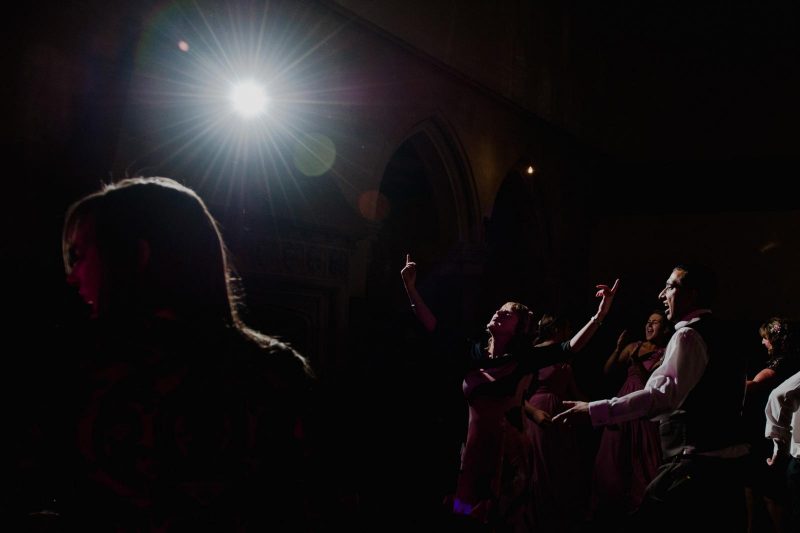
Image by Anthony Lyons
Anthony Lyons had this to add to the discussion:
“I much prefer to work on my own as the couple are hiring me for my perspective. I can see the benefits of a second shooter and occasionally I do employ one if the couple have asked. But I try to work in an unobtrusive manner and if there is a second shooter I feel it takes away the ability to blend in a little. I also find using a second shooter takes away the nervous energy which in some respect is good but in others not so as that nervous energy keeps me on my toes and I work so much better under pressure, in fact I get a buzz out of it.”

Image by Red on Blonde Photography
Hannah Hall of Red on Blonde Photography told us:
“Toby and I shoot together as a husband and wife team of two photographers. We love working as a duo because we know each other inside-out. We can predict what the other is seeing and shooting and so we work pretty seamlessly together to give our couples a double-perspective of their day. Knowing how each other sees and thinks gives us the freedom to tell wedding stories with multiple layers. Whilst one of us is capturing the groom and all his nerves at the top of the aisle, the other can hang back outside with the bride for that little bit longer, capturing those moments just before she makes her entrance. We find it really helpful for key parts of the day, like the ceremony and speeches, as we don’t have to move around quite so much to get different angles and coverage, so it helps us remain unobtrusive. I wouldn’t say that two is better than one and we know loads of our fellow photographers who shoot solo and are super awesome but for us it really works and we push each other to keep striving for better.”
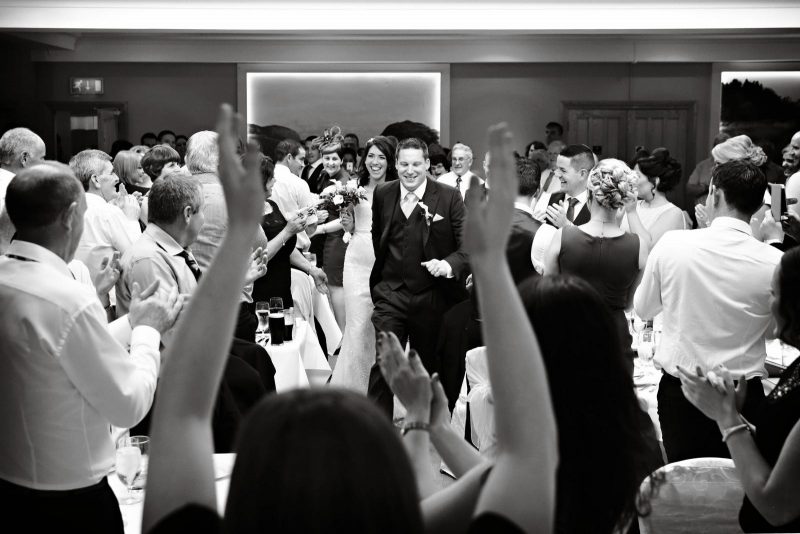
Image by Mark Capilitan
Ireland-based This is Reportage member Mark Capilitan said:
“In my experience, with the way I work (everybody is different), a lot of documentary shots, mixed with some quick relaxed portraits, with nearly 400 weddings done, I have never seen the need for 2 photographers. Of course I’ve had clients query this, but my reply is I’m well able to get around, and be almost everywhere (& nowhere at the same time if you know what I mean) and cover what needs to be covered. And the majority of my Irish weddings would be 250-300 guests minimum. It’s very hard to be an unobtrusive photographer when there’s two of you! That’s what I try to be, as invisible as possible but capture everything.
In those almost 400 weddings, never once have clients said that they wished I had covered more of this or that with another person maybe. Twice I’ve had a second photographer with me, to capture a different perspective in the church, but these days I do that shot myself with a remote trigger! Sometimes a 2nd shooter can get a nicer perspective on shots, just from the side, but again, if that’s what you’re after, it’s quite easy & quick to move to the side & get the shot yourself!”
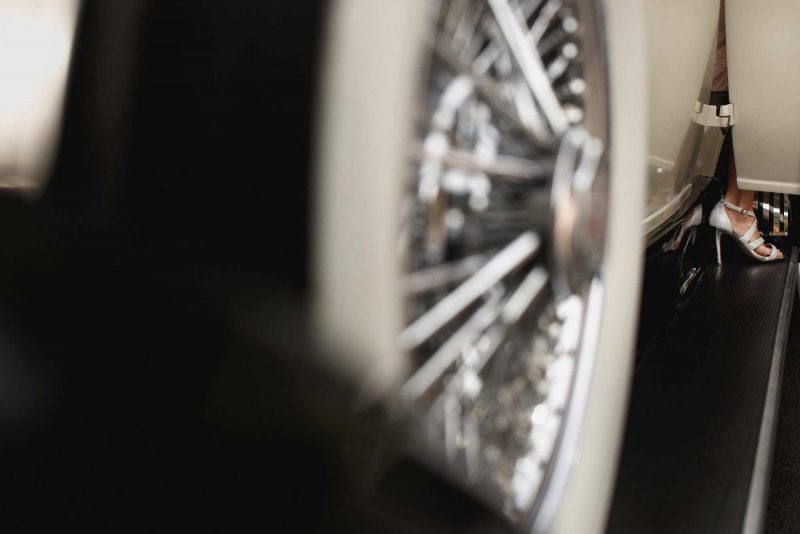
Image by Toni Darcy
Two photographers or one? We asked Toni Darcy and she said:
“I can completely understand both sides to this discussion. I’m a massive team player and I love working as a team but when it comes to documenting a couples wedding day I have to say being a lone ranger is quite liberating. I know this might come as a surprise but it means I know what I’ve shot I know what I have to shoot and I’m constantly in control.
Don’t get me wrong I’ll always welcome a second shooter on board and I love shooting with other people but I’ll always have a rule that if some one is a second they should be out there getting all the good stuff from all the different perspectives as I’ve got all the “safe” stuff covered.
The only downside to being a solo shooter for me is illness but I have to say that being a solo photographer doesn’t mean that you’re cut off from the world of photographers. The rising community of photographers in the UK is forever growing. I know for a fact that if I was ever in need of help I wouldn’t struggle to call on a list of awesome photographers who I’m so proud to call my friends.”
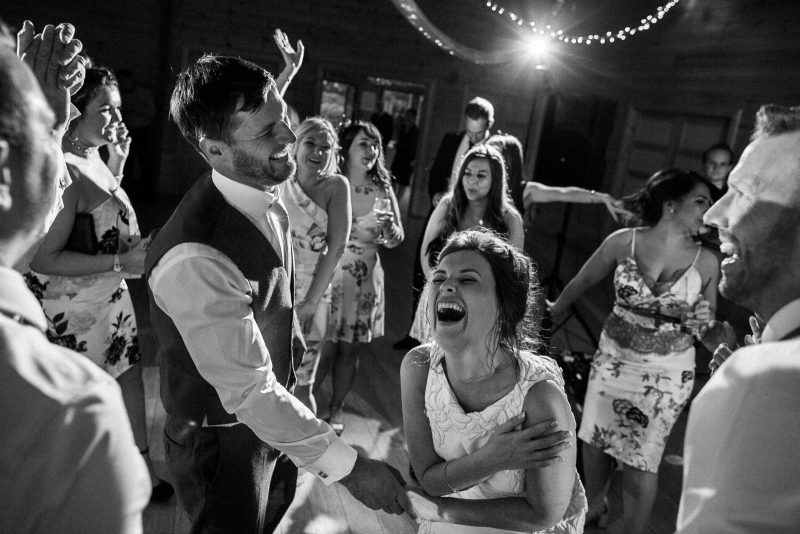
Image by Katie and James Fairclough
Katie and James Fairclough had this to add:
“The Advantages of having Two Photographers:
OK, so we’re more than a little biased when it comes to this subject. We even had a husband and wife team shoot our own wedding, so our feelings are pretty formed on this. When choosing a photographer, you’re choosing to have the story of your wedding day told through the vision of someone else. That’s a hell of a lot of trust in someone else’s vision, and why it’s SO hard to choose a photographer with all the crazy talent out there. Being a husband and wife team really adds to the mix when talking about whether a second photographer is needed to shoot a wedding, so here’s 3 reasons we think having two of us is better than one, or even a second shooter.
#1 We Think Differently
How we all see, perceive and think about a wedding day (or any situation in fact) is incredibly creatively diverse. In trying to achieve maximum storytelling impact, in our experience having multiple viewpoints can help in bringing the diversity necessary to keep the maximum interest in galleries of hundreds of images. However, this is only when multiple viewpoints are working towards the same ultimate goals and not trying to fight the overall feel of each other. We each think differently from the other, we both have our technical skills and experience, but we’re both working together toward the goal of creating the most emotionally impactful story possible. It’s not that more photographers necessarily equals more shared skill, but carefully chosen, multiple photographers working together can add to each other’s vision to create something greater than alone.
#2 We Care Equally
On a wedding day, we both care equally about what we’re doing. They’re our couple, and they chose both of us to photograph their wedding. They didn’t choose Mrs F and Mr Mystery-Unknown-Second-Shooter. We work with each other EVERY wedding we shoot. We know how each other thinks, where we’re going to be moving, what our roles are, our strengths and weaknesses and how to support each other to create a seamless experience. For us, having multiple photographers isn’t a luxury to add more coverage, it’s our own support network; it’s the competitiveness between us that drives us to that next epic shot; it’s knowing that if one of us falls, the other is there to pick us up and keep right on shooting.
#3 Quantum Photographics
“I want to shoot the first dance from on the balcony, but what if it doesn’t work? I should just play safe from down here, but I could missing such an awesome shot…ahhh, what do I do?!”
Spoiler Alert: We can literally be in two places at once. That’s just a numbers-advantage that a single photographer can’t beat. We’d hate to have to make that compromise and let something awesome go; We’d always be thinking ‘what if THAT shot was THE shot?’ We can photograph the same moments from two different angles, and try completely different approaches to a scenario. Because we have this support, we can take more creative risks and go for more daring, potentially-awesome shots without worrying about total failure. It means we can swing for the fences, push harder, fail harder, and get right back up again with the support of each other. We can hold each other’s lights, we can set up and break down faster, we have more gear resources between us in case of equipment failure. We can fix gear on the fly without breaking the flow of the shoot, we can coach the couple while the other shoots from a distance, we can entertain the couple while the other one desperately fumbles with gear in the dark. Having two of us certainly has it’s own challenges, but we wouldn’t change it for the world.”
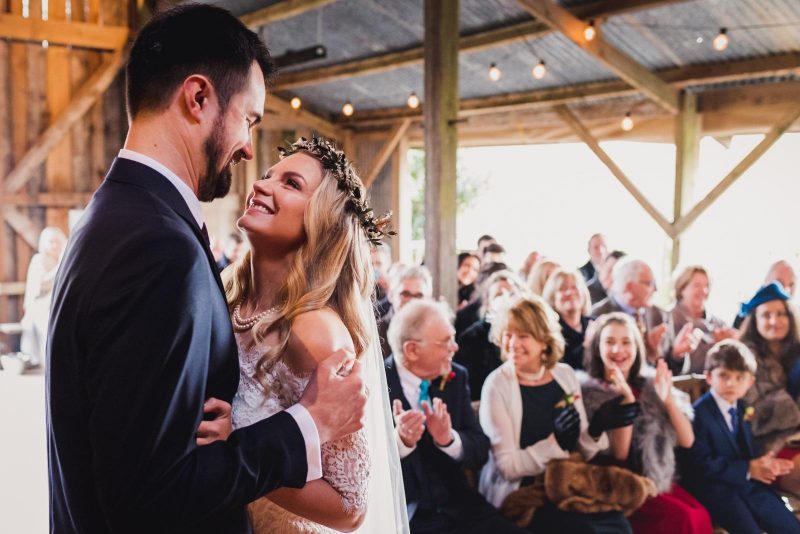
Image by Lee Maxwell
Lee Maxwell said:
“Are two photographers better than one? From this solo shooter’s perspective, no, it’s often not the case. Every couple will have their own preferences of how they want their wedding photographed. I work with couples who want a documentary approach to their day, this favours a more discrete approach, less is more. Even the equipment I use has been chosen with this in mind. Every camera click, every extra person is that more noticeable. I regularly cover weddings with 100+ guests and have never felt the day wasn’t fully represented.
However, I have never captured the likes of an Indian wedding where you could have 300 guests. Likewise I choose not to use light stands and modifiers, another reason for an extra body. There are some brilliant teams out there, there are also ‘friends with cameras to help out’. A one person crew is simple, direct and in total control, both from a communication and creative standpoint.”
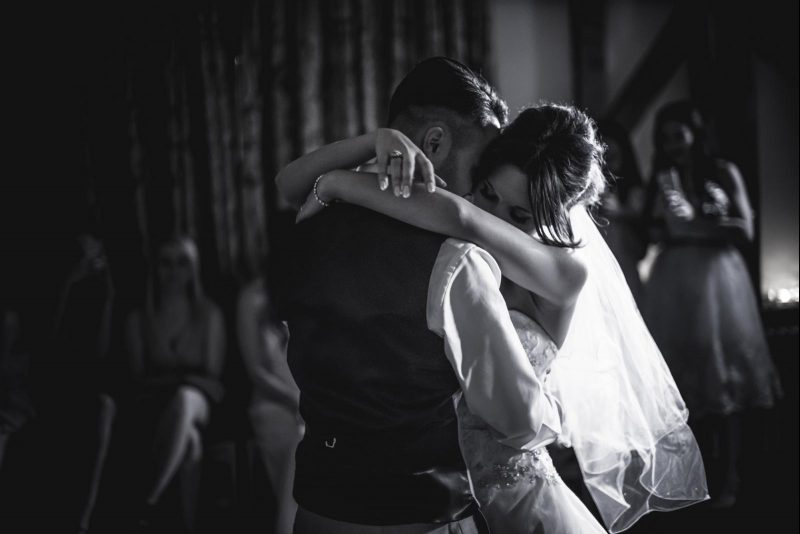
Image by Scott Spencer-White
Scott Spencer-White told us:
“Positives of having a Second:
- Coverage while the Main is off doing something else (groups or couples photos). Key positive – B&G love seeing in the final image set what they didn’t see on the day.
- Variety – Second perspective of the day – a different angle to the main, possibly different focal lengths.
- Potential for Groom coverage without risk of missing key Bridal preparation moments.
- Back up – on all levels, equipment, illness, toilet breaks, missing of timings.
- Security, another pair of eyes.
- Comfort – less time worrying if the main knows their back is covered with details, venue and candid shots.
- Creativity – Another professional to bounce ideas with, set up shots without interrupting guests etc.
- Adhoc Assistant(ish) duties if needed – usually Second Shooters are willing to go and check out sunset, get some drinks, put batteries in a flash in etc. meaning coverage is still going – within reason, they are not Assistants.
Possible Neutrals/negatives:
- Photography/business chat and banter, perhaps too much, detrimental to quality of service; time not spent covering the good stuff.
- Falling through the net – thinking the other photographer has something covered and neither cover it.
- More boots on the ground – could be detected more often by guests and feel paparazzied too much.
- Noise & flash – more shutter noise and flashes being popped.
- Someone less familiar – needing more guidance or reassurance of getting required shots.
- No show of Second Shooter – illness or transport issues out of Main Photographer’s control.
- Stress – another body to co-ordinate and keep informed.
- Cost – addition of cost, plus another mouth to feed.
- Overshoot of frames – usually x1.5 to x2 the amount of frames to cull and possibly higher amount of frames to edit as well as storage required.
- Admin – checking of adequacy (insurance, experience, kit, reliability, signing of contracts)
- Etiquette – Bad language, bad habits, rudeness, cheek, big personality/attention seeker, negative, dress code or sales talk etc. you wouldn’t usually talk about with Bride & Groom/Guests.
- Kit – may be poorly serviced, out of time sync or drastically different resulting in longer edits as not harmonious with own kit.
- In the way – literally in frames.
- Style clash (posed/set up shots vs documentary). Intervening/Interacting with guests too much, not covering natural moments.
- Loss of property or images (best scenario Second shoots on Main’s cards and does not delete frames throughout day!)
Comments:
- A fine balance is required on pretty much everything (chatting, creative vs. standard/safe shots etc.)
- Realistic expectations required on all sides.
- Clear communication & co-ordination required.
- Trust required.
- Hard work required.
- Careful candidate consideration required.
- Flexibility from Second required.
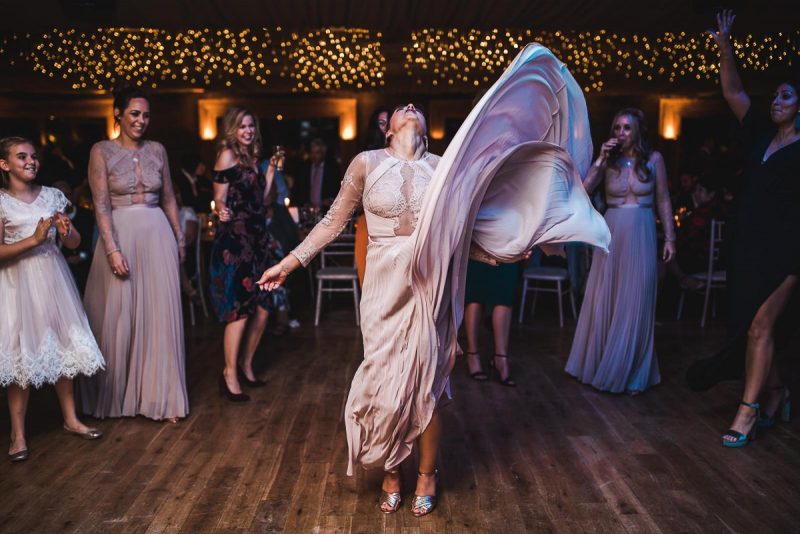
Image by Eve Dunlop
Eve Dunlop said:
“We are now in the age of the ‘story telling photographer’; at it’s most organic someone who stands back and records the day as it unfolds and leaves no imprint of their attendance, and tipping the other end of the scale someone who cherry picks the emotive moments and creatively puts together a powerful collection of images to give you goose bumps every time you view them, they not only blend in they become part of the gang!
….do you go for a second shooter?
Some photographers won’t offer it, some will recommend it, and some will leave it up to you!
I’ve shot somewhere in excess of 300 weddings. The majority of those have been solo and I don’t miss much. It’s my job not to! As my personal career progressed and venues got bigger, locations further afield and the number of guests attending expanded from an average of seventy, to weddings boasting 200+ happy smiley faces, I found the addition of a second photographer became something of a must. But importantly and for me one of the make or break decisions of whether to have another shooter is that they need to be a good photographer!
Sounds obvious right! I will book the best person I can for the job even if I deem them to have more experience. It’s like having a dance partner, you’ve got to work well together and they have to be happy for you to lead and not tread on your toes! The better and more experienced my wing-man/woman the easier my job will be during and after the wedding (when I’m editing). They need to be where I am not.
Having over 150 guests? Go for it!
Under that number it might be overkill.
Speak to your photographer if you’re unsure and ask them who they use and why, most photographers will provide a second shooter they respect and who shoots in a similar style. It’s a good way to gain experience for people but essentially they are being relied on to do a job for me, another set of eyes and another angle for my clients.
I second shoot form time to time when I have a gap in the diary. It’s hugely fun!”
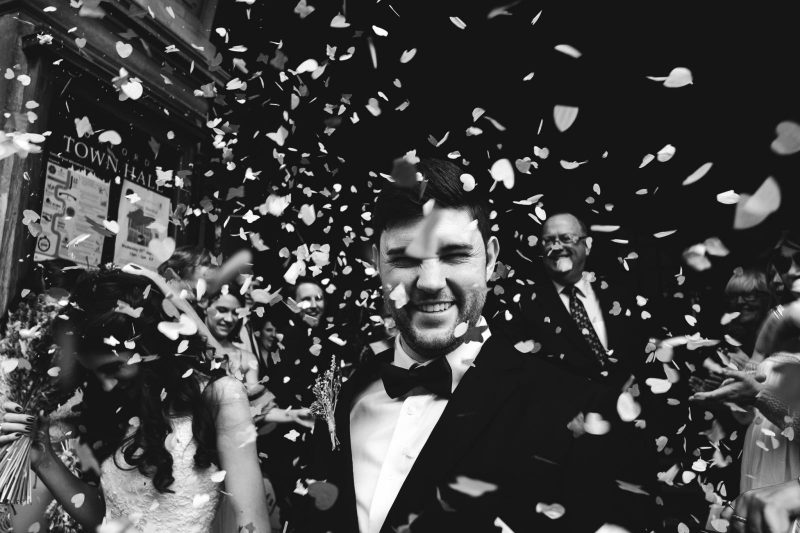
Image by Josh Tomalin
Josh Tomalin added to the discussion with this:
“Are two photographers better than one? Maybe, but I think not. Two reasons for this, one whimsical and one practical.
So number one, what I’m trying do with my imagery is tell a story, report an event, from a subjective point of view. Luckily I find the world hilarious, which is why humour is such a strong part of my images. At no time am I trying to pretend that I was everywhere all at the same time. The things that I chose to photograph are the most important elegant / entertaining / beautiful or tragic things to me at the time, and whilst any tool can wave a camera around, it’s choosing what is important that makes a photographer. If 100% coverage was really a necessity we could solve this problem by putting Go-Pros in the corner of every wedding venue and have done with it. At weddings with two photographers I sometimes see two obviously different points of view and styles in the photos, which creates an odd and jarring result. Like playing reggae and metal at the same time.
Number two, I’ve lost count of the number of times I’ve been at a wedding chatting to someone and they’re surprised to learn that I’m the wedding photographer rather than someone’s cousin. I’m only able to do what I do by learning when to be low-key and when to get stuck in with a beer in my hand on the dancefloor. Having a second photographer gets everyone in the mindset of this being a production rather than a party and that’s going to kill off any natural emotions and reactions right quick.”
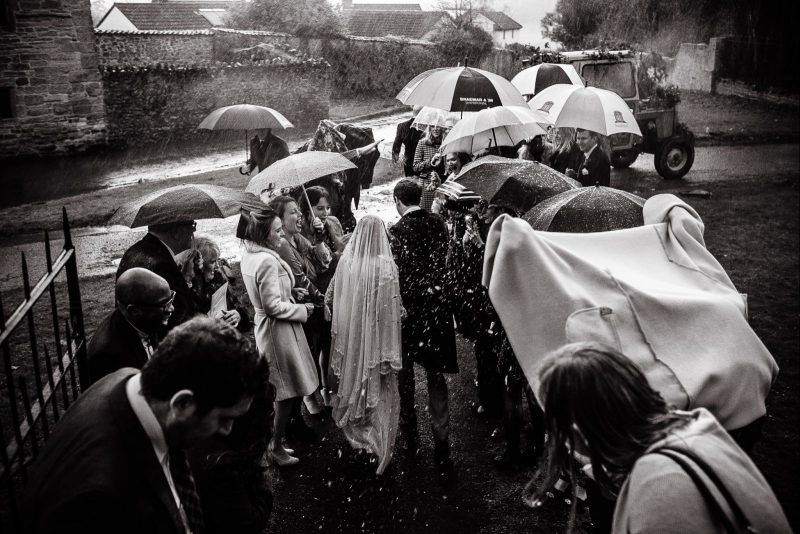
Image by Tom Weller
Tom Weller said:
“Personally as a single shooter I prefer not having to think about what my/a second shooter is doing – I have never liked that responsibility. Different for those who work together always as a team (and thus have a high level of familiarity with each other) but, for me, having to source a second and “manage” them on the day affects my ability to focus on my role on the day. I prefer to work alone.”
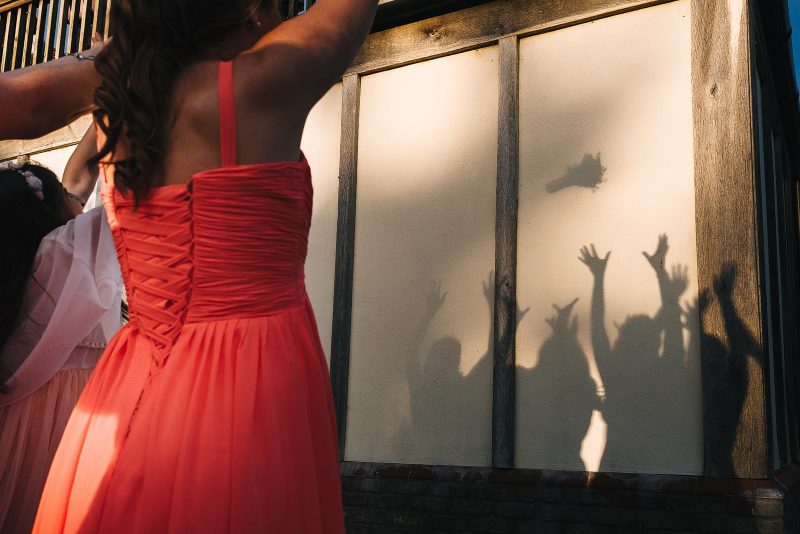
Image by Alex Miller
Alex Miller told us:
“Yes and No!
Firstly, No. Mainly because I don’t want guests at a wedding to be overly conscious of a photographer being around – I’ve been at weddings where there have been two photographers alongside two videographers and I can tell that people act differently, as they can sense that they’re being watched. The best photos come when people relax and enjoy themselves, so I do think in this sense, less is most definitely more.
But here’s the caveat… I think there’s something great in being able to take a risk. And that’s much harder to do as a single shooter. When I’ve second shot for friends it’s been fun to be able to take a gamble and try for more interesting shots – but that’s something I’m far less able to do alone.
As an example, above is a photo I took of a bouquet toss. As it happened the bride threw her bouquet a little too enthusiastically on first attempt and it went flying over the heads of everyone, so I got the rare chance to try something a little differently when she tried again. I spotted the bridesmaids shadows on the wall and moved in closer to make the frame you see above. I doubt I would have risked a shot like this if it was the only chance I had of capturing that particular moment, as there was a lot that could have gone wrong with it (the sun going in for one thing!).
I still prefer shooting alone – it’s less intrusive in my opinion but if I could clone myself for a few parts of the day I’d relish the chance to take more risks with some of my shots!”
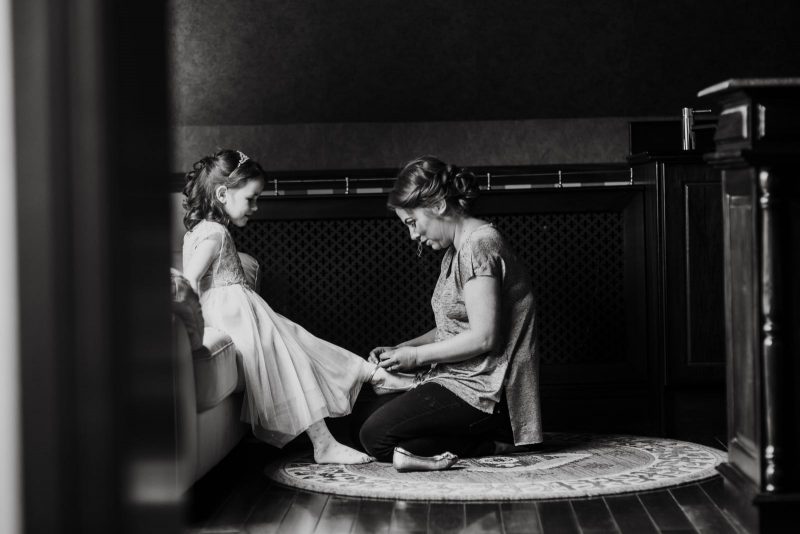
Image by John Murphy
Northern Ireland based member John Murphy said:
“I would have to go with the solo shooter perspective; in 15 years of shooting weddings I have only twice used another shooter to cover groom prep with contrasting results. I believe in consistency in my work and this is best achieved if I’m the only shooter, after all my clients have booked me in the strength of my work not another photographer.
I also fear that things would be repetitive with two shooters unwittingly covering the same angles resulting in the same images over again.”
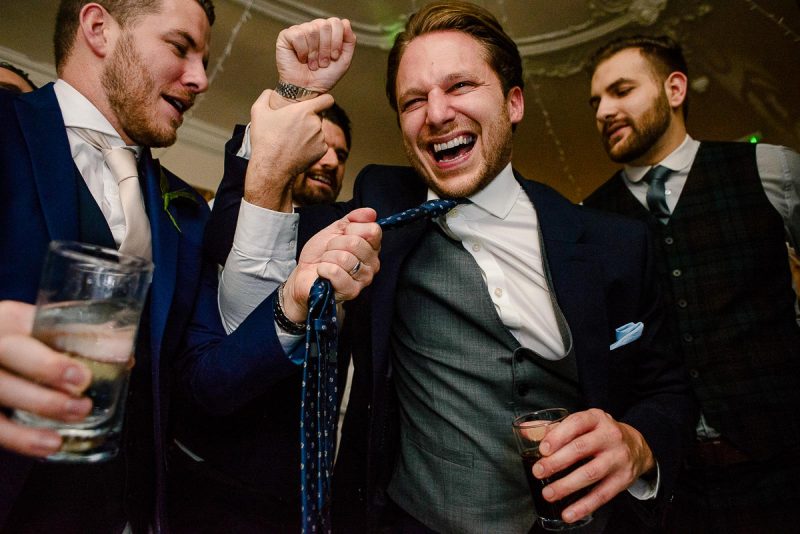
Image by Will Wareham
Will Wareham told us:
“I think it can depend on the individual wedding on what dynamic works best. Much of this is picked up from first communications with clients. I’m happy to document my own ‘story’ throughout the day regardless of one/two photographers – knowing that it will still remain as a single perspective or synchronised as part of a 2 photographer collection – 2 stories running continuously, which is often the case in movies and books.
I guess the interesting factor is having a combined story of 2 ‘authors’ in one wedding – quite unique. Logistics are another factor – especially with more importance placed on documenting both bride & groom getting ready and being able to give them equal storylines in the day using 2 photographers to document completely.”
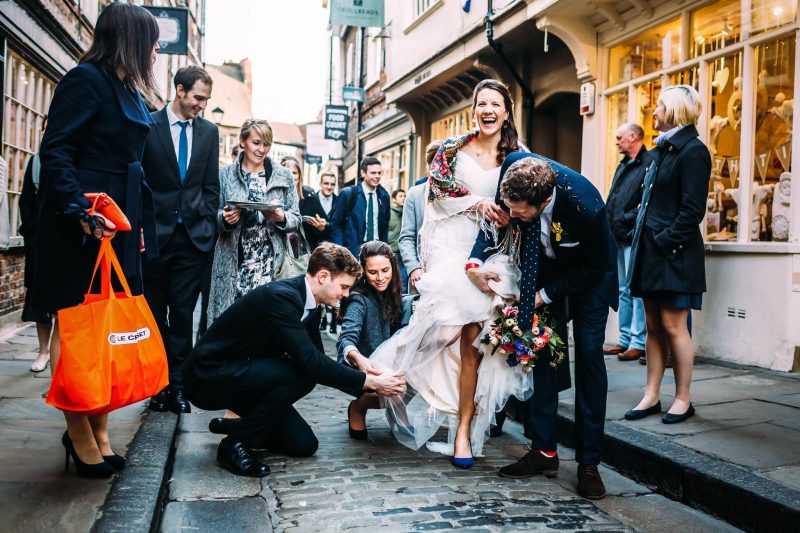
Image by John Steel
John Steel had this experience to share:
“99% of my weddings I shoot on my own, I just find it so much easier.
There was a time when I did use a 2nd shooter. She was trying to get into wedding photography and thought I would give her a chance to get some pictures for her portfolio. She was in the same town as me and a professional and a similar price point but I thought I’d help her out. I had a lovely wedding in a beautiful location with someone I went to university with so thought the wedding would be great experience for her. I met up with the bride and this 2nd shooter loved it, she just wanted to photograph the dress, the shoes and all the details. It’s not my strongest area so I thought I’d let her get on with it. Then it was time to meet up with the lads who I was meeting at the driving range. I’d told them to bring some comedy old school golf jumpers and we could mess about and create some fun pictures. Little did I know I’d walked into the Nike Golf Academy where golf professionals analysed peoples strokes. When I told this 2nd photographer she was nope, I’m going to stay with the bride. Nope, you’re coming with me!
On the way to the driving range she lost me and I didn’t see her for an hour (I’d now just decided to shoot on my own). Once I found her we went back to the bridal preparations. I asked her why she wasn’t photographing and it turned out that she’d only brought one battery for her camera and it was charging. When the bride was ready I did a few shots and then let her get some for her portfolio (her battery was now charged). In the venue there’s a great balcony so this girl wanted to grab a shot of the bride walking across the hall from above so I let her do this (I knew if she did this that she couldn’t then come into the ceremony room as there wasn’t time)
During the drinks reception which was a boiling hot, bright sunshine day (hard light) I was presented a list of group formals, I’d already had a list of 15 which was quite a lot but doable. However, another bridesmaid had a clipboard and in total 53 group formals to do, which was obviously going to take some time. I told the girl, just go into documentary mode, lots of people drinking, laughing and generally having a good time, whilst I went into traditional photographer mode.
Finally when everyone had gone in for their wedding breakfast I got a chance to sit down and ask her how she’d got on. She then informed me that she couldn’t take pictures because it was too sunny! Arrrrgghhhhhh, this was the final straw.
After the first dance, I then saw her going around the guests giving out her business card which I thought was completely out of order but I was stuck with her for the rest of the evening as she’d come in my car.
The next day, I’d noticed that on her Twitter and Facebook profile she’d been tweeting pictures of the wedding all day. She kept saying “my bride’s getting ready” “my bride looks stunning” and forgot to mention she was helping me out. During the 16 hour day she presented me with 22 pictures. She also blogged the wedding and forgot to mention me.
I have shot with other shooters and it’s a great experience but I prefer to photograph them on my own ?”
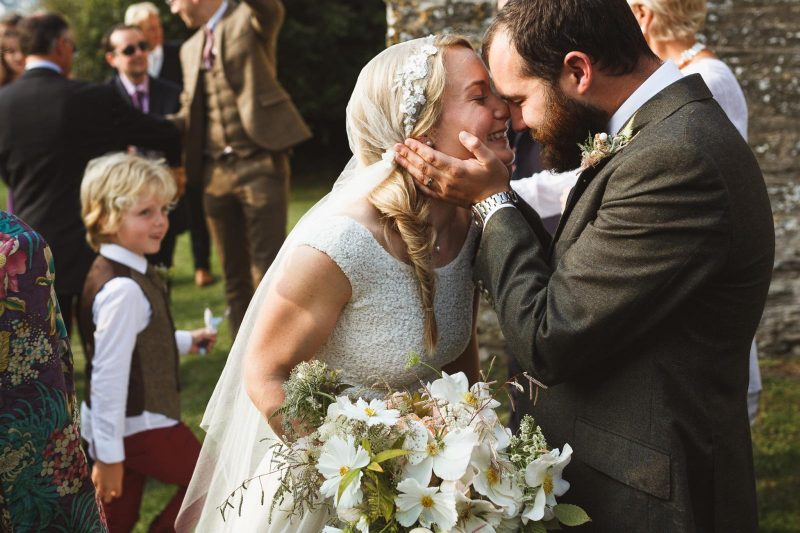
Image by Michael and Hannah Jackson
Michael and Hannah Jackson said:
“Two Photographers Vs One Photographer is an argument that often comes up but in reality it misses the point most of the time. It’s not always quantity over quality, two poorly organised photographers lacking in confidence or experience in different conditions is never going to beat one solo superstar.
The benefit that we have is that Hannah and I work together week in, week out and have shot over 250 weddings together. We know what each other need, we have confidence and trust in one another and neither of us needs “managing” or to worry about whether we’re doing what we should be doing.
I’m dubious over the benefit of a “Main Photographer” who sells a “Second Photographer” as an Add On but that that Second can rotate week from week. I’m not sure that this really adds anything positive for either the Bride & Groom OR the Main Photographer, if anything it can be a distraction. But hiring two people who work brilliantly with one another seems like a no brainer for me.
There are so many reasons, increased general coverage, the ability to be in two places at the same time whether during the ceremony, speeches or dance floor etc. Or simply to be at both Groom Prep and Bridal Prep simultaneously and document both sides of the story.
Personally, we’ve experienced an almost instant trust confidence that people give to us as we are married. Perhaps people see us and the way we are with one another and it makes them relax, maybe its that we’re not a single man in a room full of women and that can be sometimes daunting or intimidating for some people? I’m not entirely sure but I know that for us, we work better together than apart and we deliver our best work working together and that the benefits are huge for our Brides and Grooms.
In a nutshell, booking two people that work together all the time is a huge benefit, but booking one person who brings along an unidentified “second photographer” is a really different thing and the benefits of that could be argued about for days.”
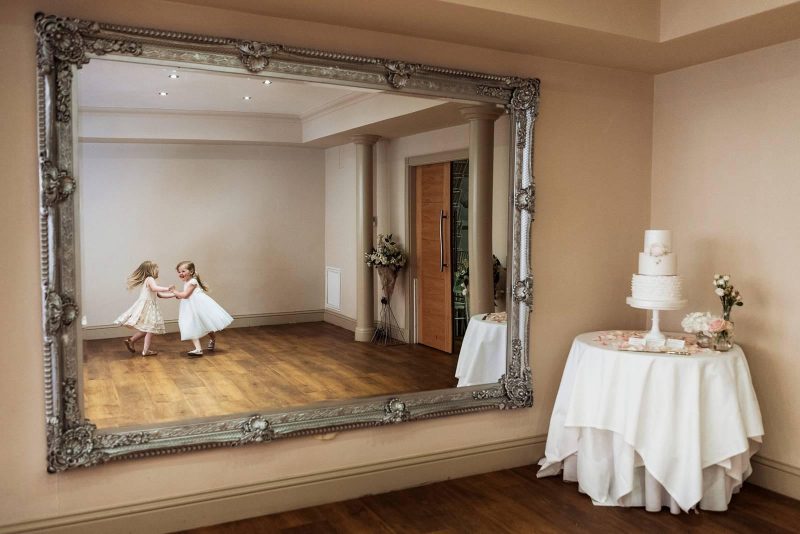
Image by Matthew Long
Matthew Long had this to add:
“I almost always shoot on my own. Less than 5% of the weddings I’ve shot I’ve used a second. It’s always been at the request of the couple to get coverage of both parties getting ready. Which makes sense to me, I’m happy to find someone for them if I can’t be in two places at once.
The key issue for me, and it relates to this site perfectly, is story. Story is everything when I’m shooting. I know I can tell the story of a couples day in my style, so that the set of images feels right and is consistent. Yes, a really good second who shoots in a very similar way to you can really add value and depth to the story but I have had seconds where I’ve struggled to blend their photos into the story I’m telling. I’ll be looking at the second photographers photos thinking things like “argh, you need to be closer, argh, you need a different lens” etc. They can just feel too different.
Not always of course, I’ve had seconds where everything goes together seamlessly and have second shot for others where the same has happened (unless they’re lying to me).
So that’s the key I think. Either working with someone week in week out and performing like a team or finding someone as good as you who shoots in a similar style. Which isn’t easy because most of those people will be shooting their own weddings! It’s why I think I’ll always prefer to fly solo.”

Image by Pip and Simon Photography
Pip and Simon Photography said:
“Simon and I work as team, and have done for a few years. There’s no hint of primary and secondary shooter, we shoot as equals. We’ve got to the point now, after shooting hundreds of weddings together, where there’s no discrepancy between our styles, so comments about ending up with a batch of photos that don’t quite fit stylistically together, don’t apply. However, I do think that’s a real issue with hiring in a second that you don’t work day in, day out with. As for getting in each other’s way, and therefore, in each other’s shots, we barely see each other throughout the day! We split in the morning so that the groom gets just as much coverage as the bride, are at opposite ends of the aisle (again, mindful of which lens each other is using so staying out of frame), only one of us shoots the groups so whatever else is happening at that time, isn’t being missed and we split the speeches so one of us focuses on the speakers and the reactions of the ‘top table’ while the other gets the reactions of the guests from all over the rest of the room. The only bit we fully team work for, side by side, are the portraits (not relevant to TiR, I know!) where we swap between shooter and lighting tech.
So I very much agree with the comments on the negative side of bringing in a second shooter (mis-match of styles, not working fluidly together etc), but when it’s a duo team who ONLY work together, both sides of the story are told, actions and reactions are captured, different perspectives of the same scene are documented and all in the same style that seamlessly blends.”
Thanks so much to the This is Reportage members above who contributed to this piece! If you found this interesting, you may like to see the answers to the first question we posed our members: “As wedding photographers yourselves, what would you look for when picking a photographer?”
